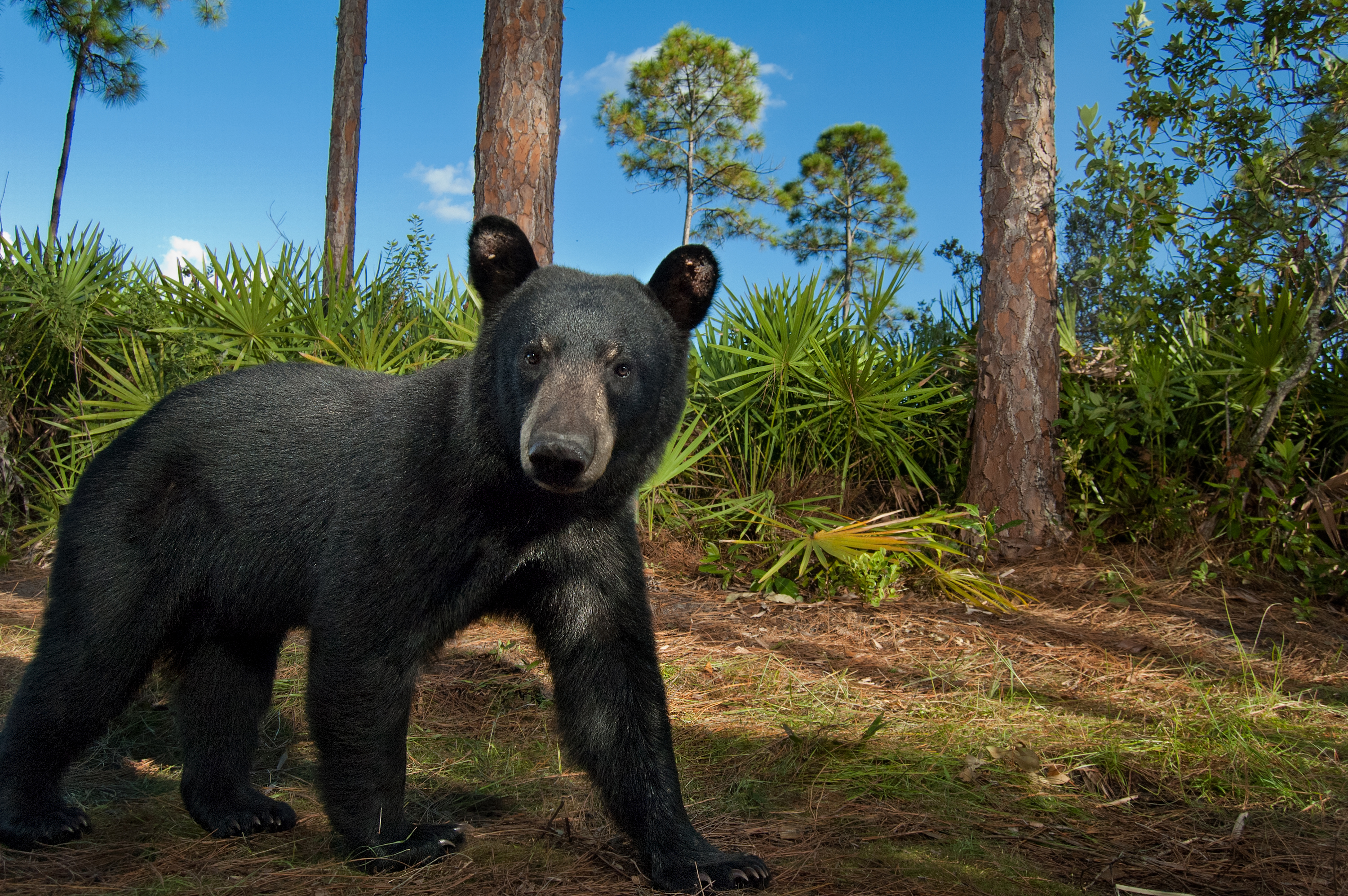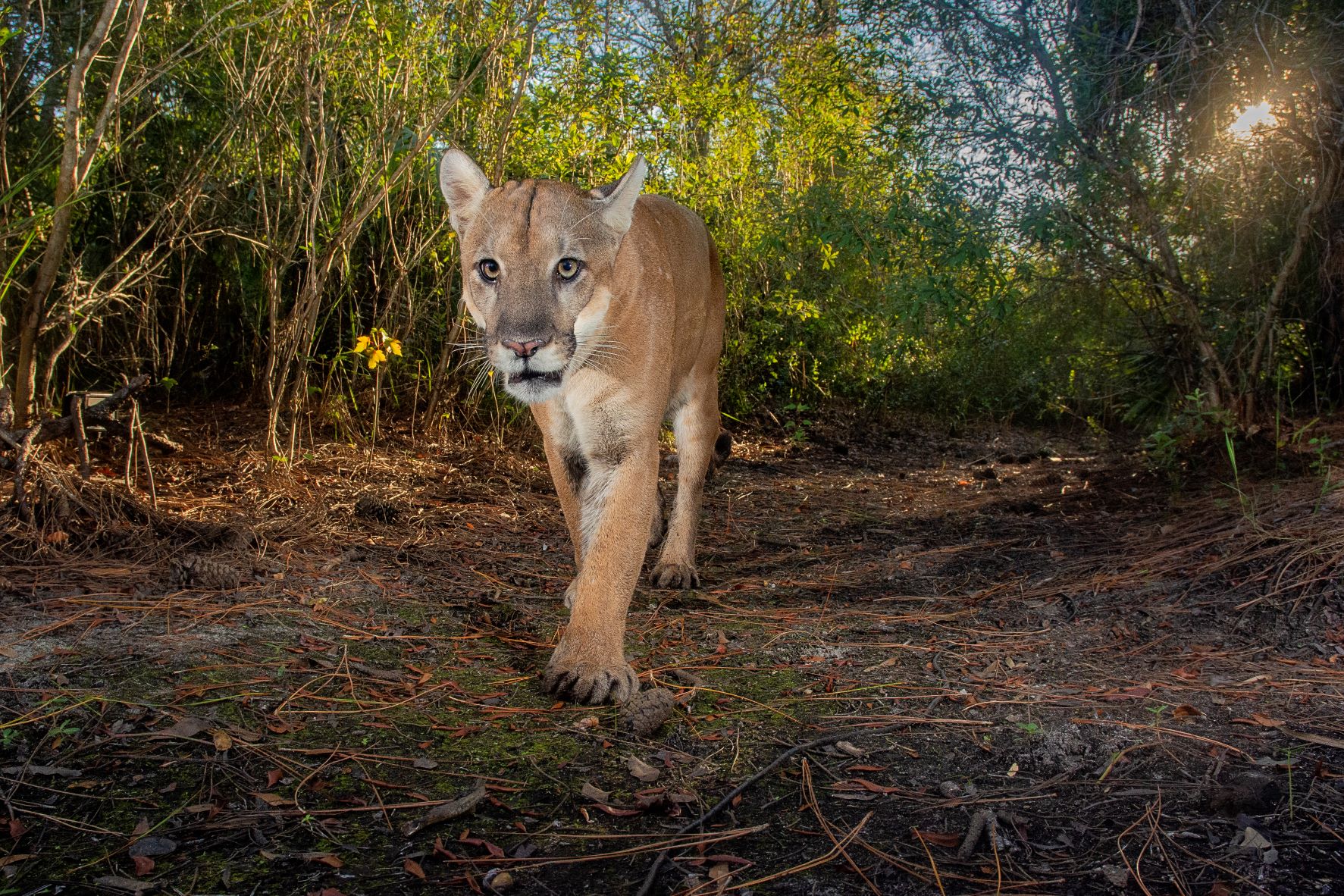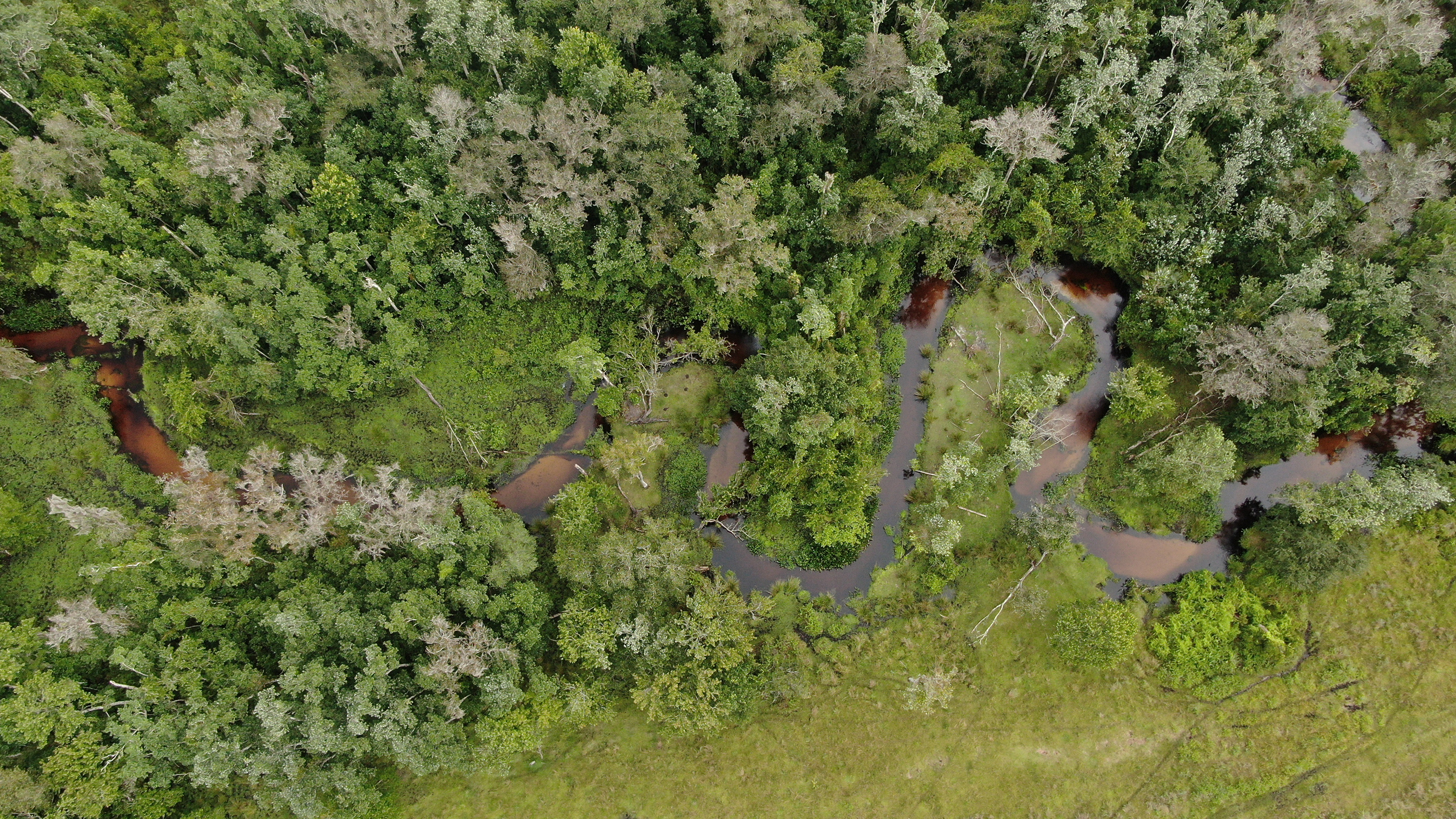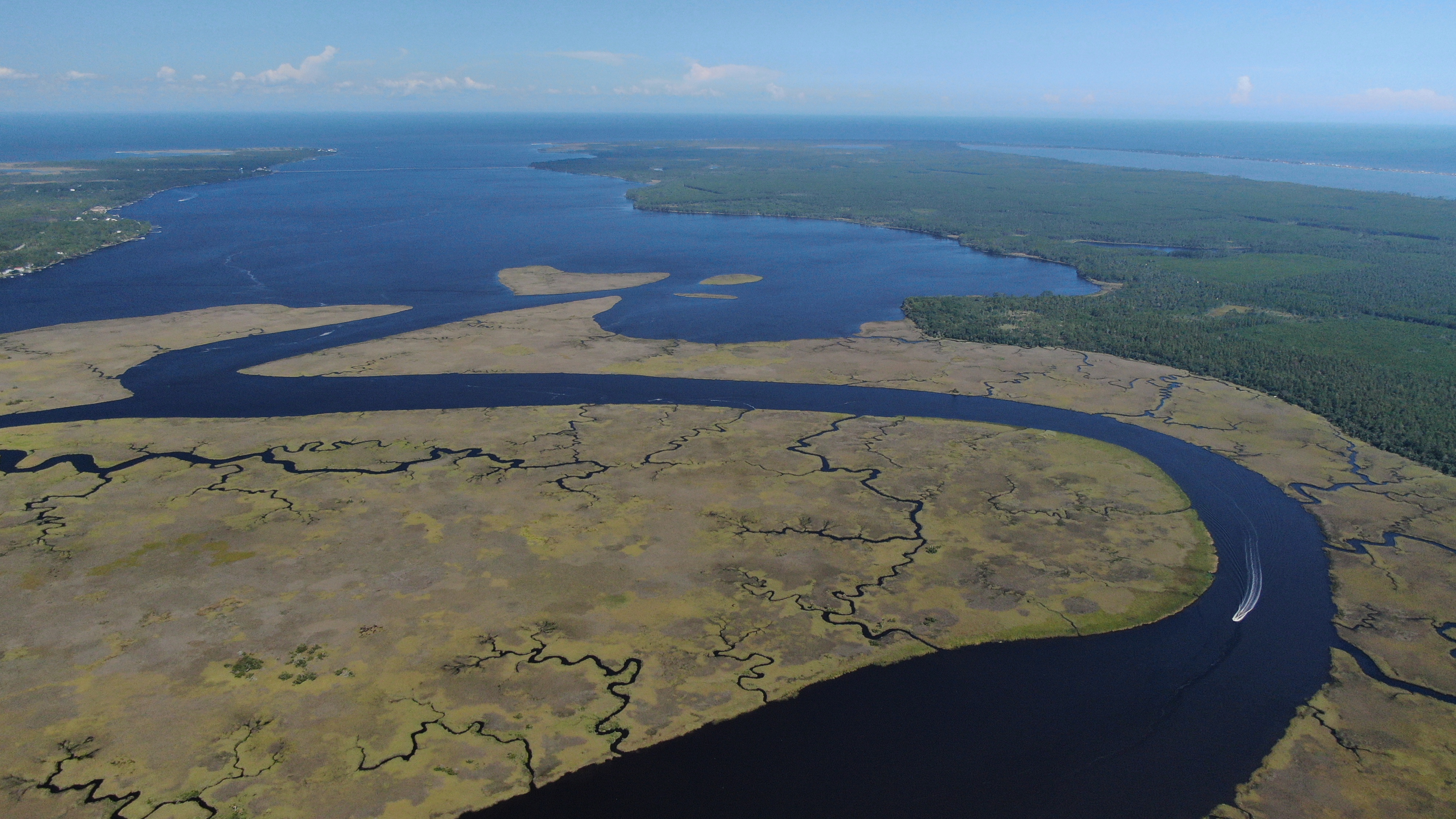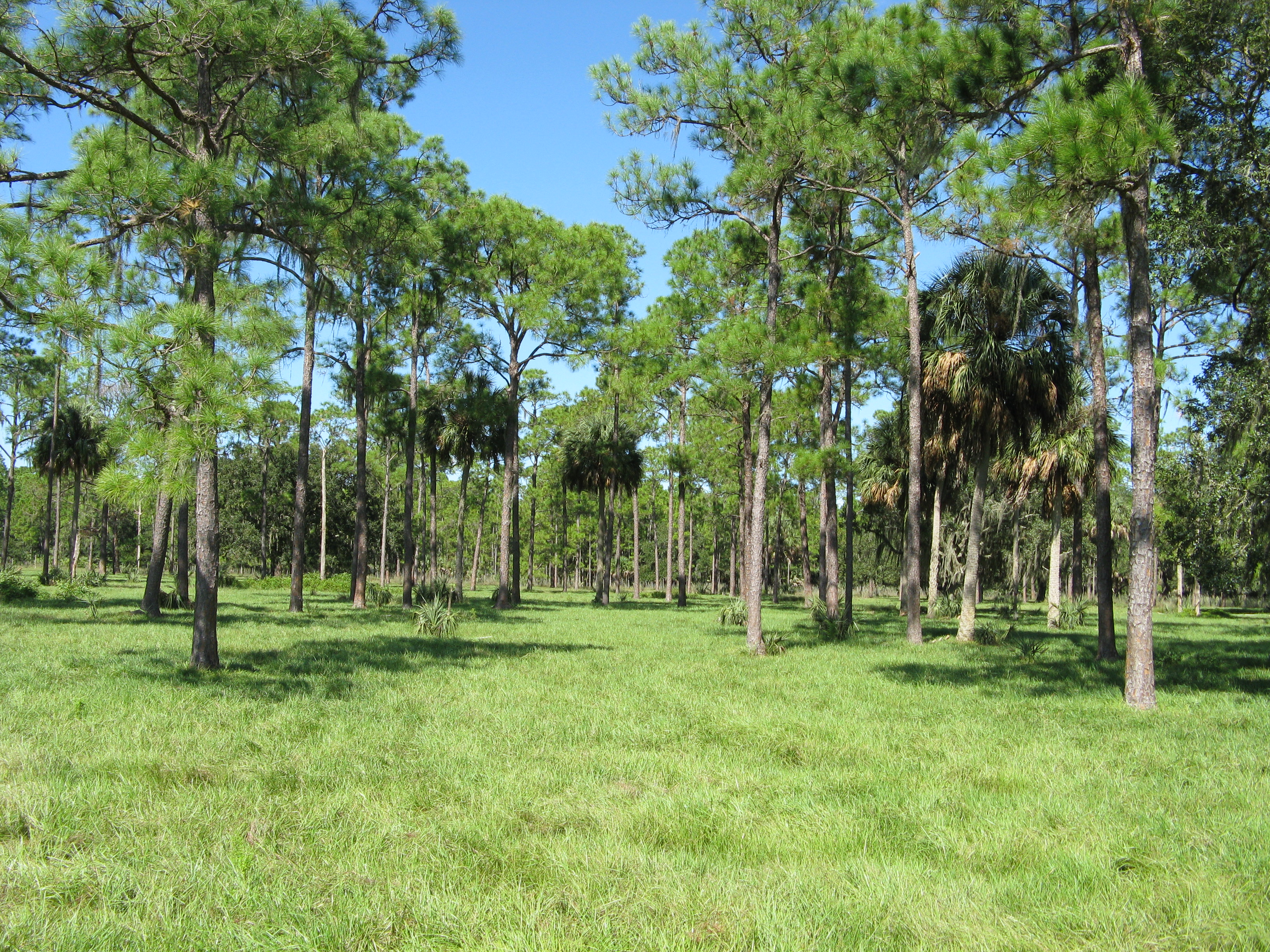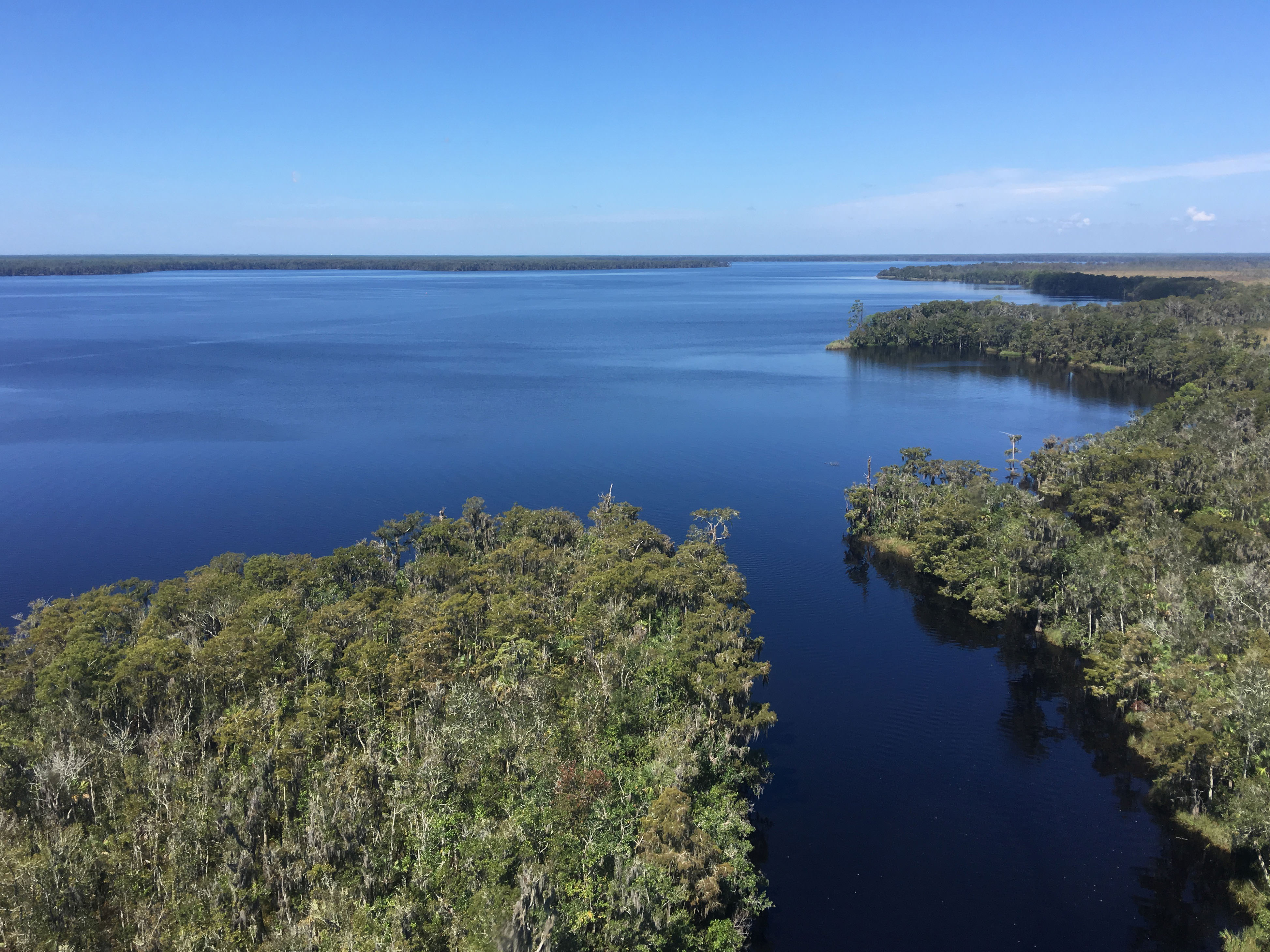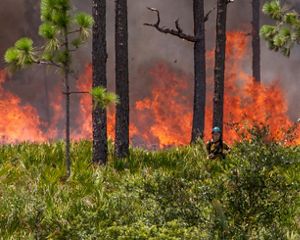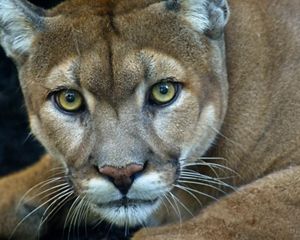
Bluffs of St. Teresa Aerial view of the Bluffs of St. Teresa in Florida. © Russell C. Mick
Our Goals for Florida Land Protection
We have a big long-term goal in Florida: by 2045, the majority of the resilient land that’s critical for biodiversity to adapt to our changing climate will be intact and healthy. We’ll do this by conserving connected ecosystems across land, freshwater and marine landscapes to boost biodiversity resilience. We work to manage and restore ecosystems by applying prescribed fire, restoring wetlands and uplands, addressing non-native invasive species and testing and communicating natural resource management techniques.
Data informs these efforts to help us locate projects in areas where they’ll have the greatest impact. By considering each site’s biodiversity resilience and carbon sequestration capacity, along with threats such as invasive species, altered fire regimes, degraded water quality and recreational activities that degrade habitat, we identify a suite of improved management activities to restore landscapes to their natural state.
Florida Land Protection Successes
TNC has conserved and protected thousands of acres of vital and biodiverse lands representing some of Florida’s oldest natural habitats that are home to imperiled and iconic plants and wildlife such as the Florida panther, bald eagle, manatee, wood stork and gopher tortoise. These lands provide critical water supplies, enhanced water quality and a wide variety of essential ecosystem services to the residents of Florida. They also provide benefits to climate resilience and the safeguarding of habitat needed by countless native and migrating species to help protect Florida’s biodiversity.
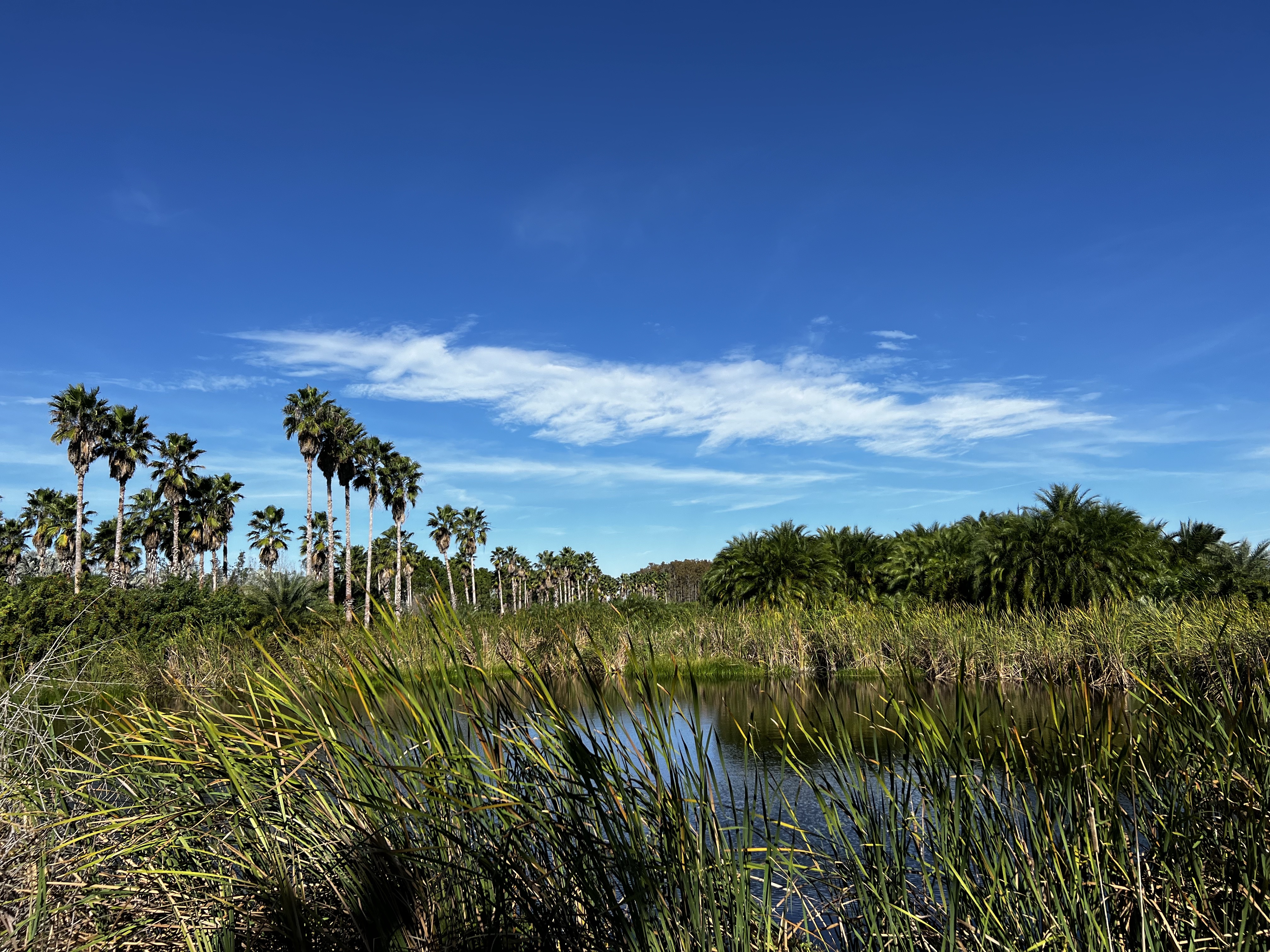
G Road Grove: Citrus Partnership Expands Ecological Connectivity
The Nature Conservancy in Florida and the USDA Natural Resources Conservation Service (NRCS) have joined forces to purchase a conservation easement at G Road Grove, an active citrus grove and tree nursery in key panther habitat. G Road Grove joins a network of protected lands that expands the area within the Florida Panther Dispersal Zone, a 30,000 acre corridor in Hendry and Glades counties. This land helps connect the panthers' current breeding population in areas south of the Caloosahatchee River to suitable habitat north of the river.
Florida panthers depend on these lands for safe movement and reliable food sources. Notably, the grove is home to prey species such as white-tailed deer and invasive feral hogs, which panthers help control. Panthers, added to Florida’s endangered species list in 1958, once roamed the southeastern United States but are now found only in parts of southwest and south-central Florida.
G Road Grove joins nearby conserved lands in this corridor, including FWC’s Spirit of the Wild Wildlife Management Area, Okaloacoochee Slough State Forest to the south and several conservation easement lands to the north, including Black Boar Ranch, Lone Ranger Forge and Chaparral Slough.
By protecting more lands in the Florida Wildlife Corridor, TNC continues to support the Florida panther for generations to come.
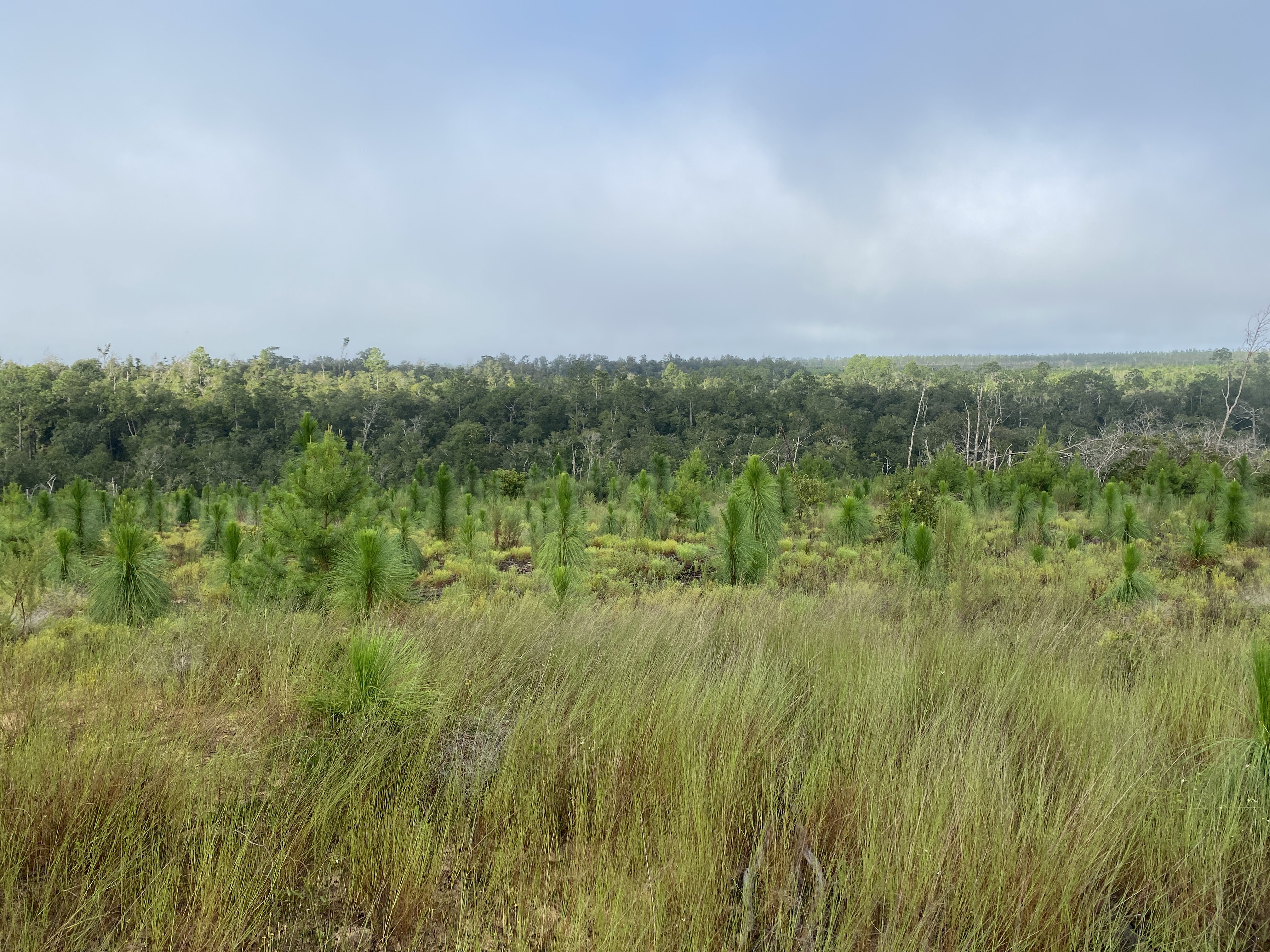
Cola River Land & Timber: Connecting Partners and Wildlife Pathways
The purchase and protection of the Cola River Land & Timber property closes the gap in a massive 22,000-acre conservation hub along the Apalachicola River. Totaling more than 750 acres, the property includes 660 acres of restored sandhill, complete with thousands of young longleaf pines. The Cola property also includes the largest remaining unprotected slope forest/steephead ravine/seepage stream complex of Sweetwater Creek, a major tributary to the Apalachicola River. This incredible property, which includes rare ecosystems and species like Eastern indigo snakes, was slated to become a subdivision. But TNC in Florida brought together funders to help purchase the property and partnered with Florida Department of Environmental Protection (FDEP) to permanently protect the land.
The Cola parcel will be added to Torreya State Park, connecting the state park with TNC’s Apalachicola Bluffs and Ravines Preserve. TNC and Torreya State Park (FDEP) have coordinated on restoration projects for decades, including replanting longleaf pine and groundcover plants and conducting prescribed fires. This partnership will continue as we work together to restore this former pine plantation and bring wildlife back to this area. And with science-based management, we aim to support plants like Florida Torreya and Florida yew, extremely rare conifers that grow only along the Apalachicola River’s steep head slope forests.
By closing the gap between conservation areas, TNC in Florida helps create healthy habitats and safe pathways for wildlife. As we work to continue restoration efforts on the Cola parcel, including reintroducing prescribed fire, we ensure that wildlife such as gopher tortoises, Red-cockaded woodpeckers, Sherman’s Fox squirrels and other wide-ranging species have the habitat needed to thrive. Prescribed fire activities have the most impact across connected landscapes, allowing TNC and our partners to burn larger areas at a time. This connection and our continued partnerships improve how we manage sensitive habitats and in turn, reverse species loss in one of America’s richest biodiversity hot spots.
Hendrie Ranch: Building Wildlife Corridors Through Land Protection
The Hendrie Ranch is a biodiverse and special place at the southern end of the Lake Wales Ridge in Highlands County, a region where TNC has focused efforts to protect and connect lands and waters essential to wildlife including the Florida panther. A protection priority for decades, the Florida Fish and Wildlife Conservation Commission and the Florida Department of Agriculture and Consumer Services, in partnership with TNC and the U.S. Fish and Wildlife Service protected 661 acres of the ranch in 2023 through a conservation easement, ensuring the ranch may continue cattle ranching while being protected from development.
The easement will protect surface and groundwater quality and quantity, necessary for maintaining healthy ecosystems. The property is strategically located as part of a protected landscape providing essential corridors for wildlife, including lands important for Florida black bear, Southeastern fox squirrel, gopher tortoise, Florida scrub jay, crested caracara, swallow-tailed kite, wood stork and Florida sandhill crane.
With threats such as development to Florida's diverse wildlife, lands and waters, we continue to pursue opportunities to collaborate with landowners and partners to protect critical habitats. This collaboration of landowner, federal and state agencies, and nonprofit organizations successfully results in the acquisition of conservation easements that safeguard lands and waters critical to biodiversity, climate resilience and Florida’s future.
Chaparral Slough: A Win for Panther, People and Nature
This 6,859 acre wildlife corridor located in southwest Florida is a Florida Forever project protected from development by a conservation easement, connecting protected habitat to secure the wildlife corridor for Florida panther migration north toward protected lands.
The Chaparral Slough project area—11 miles long and one mile wide—runs along Chaparral Slough, a tributary to Cypress Branch, and is part of the 122,213-acre Fisheating Creek Ecosystem Florida Forever Project. This conservation easement connects protected habitat from south of the Caloosahatchee River to Fisheating Creek, securing the wildlife corridor for Florida panther migration north toward protected lands flanking Fisheating Creek.
Chaparral Slough features a vast array of natural habitats, including depression marsh, wet prairie, forested wetlands, floodplain swamp, slough, floodplain marsh, hydric hammock, prairie hammock, dry prairie and mesic pine flatwoods. The wildlife corridor is home to the endangered Florida panther in addition to other iconic species including Florida black bear, Eastern indigo snake, gopher tortoise, Florida sandhill crane, great egret, great blue heron, little blue heron, snowy egret, wood stork, white ibis, black-crowned night heron, crested caracara, American bald eagle, Florida burrowing owl, swallow-tailed kite and snail kite.
These lands also provide critical water supplies, enhanced water quality and a wide variety of essential ecosystem services to the residents of South Florida. Chaparral Slough captures, stores and slowly releases water that travels to the Caloosahatchee River and the downstream San Carlos Bay estuarine system. The completion of this conservation easement in 2022 signifies a new era of protection for Florida’s natural habitats.
Ravensworth Farms: A Connected Corridor
The conservation easement on this biodiverse 1,069 working cattle ranch located along the eastern edge of the the Lake Wales Ridge in Highlands County prohibits development and preserves critical habitat for biodiversity and natural systems in the Arbuckle Creek watershed.
The conservation easement completed in 2021 permanently prohibits development on the property while allowing cattle ranching operations to continue uninterrupted. TNC’s protection of the property preserves the ranch’s role as part of the connected corridor of critical lands that benefit wildlife and supports water flow and storage within the Arbuckle Creek watershed, a critical component of the organization’s mission in Florida.
The property is a key piece in the network of environmentally important and protected properties in the region. Ravensworth Farms is bordered by other conserved lands and Arbuckle Creek to the east, which separates the property from the 106,000-acre Avon Park Air Force Range. Promoting cattle operations on Ravensworth Farms while at the same time preserving wetlands and important habitat protects the resiliency of the entire region. It ensures a compatible land use within the Air Force range’s military training footprint.
The property is integral to ensuring water quality flowing into the creek and southward toward Lake Istokpoga, feeding into efforts to protect and buffer the Kissimmee River and other tributaries to Lake Okeechobee, and ultimately the Everglades, advancing TNC’s water conservation efforts. The land also provides protection for a variety of important habitats including longleaf pine, as well as iconic wildlife such as the Florida panther, Florida black bear, bald eagle, southeastern fox squirrel, gopher tortoise, crested caracara and roseate spoonbill.
Bluffs of St. Teresa: Now a Florida State Park
This once in a generation win for the environment protects 17,000 acres of habitat with immense conservation value. This essential tract of coastal habitat in Florida’s Big Bend is part of a protected landscape spanning over one million acres. This conservation milestone benefits climate resilience, water quality, safeguards of habitat needed by countless native and migrating species and has now been designated as a Florida State Park.
Finalized in 2020, this acquisition was over ten years in the making and closes the gap between Bald Point State Park and Tate’s Hell State Forest, creating a contiguous protected landscape that includes the Apalachicola National Forest, St. Marks National Wildlife Refuge and the Ochlockonee River State Park. The protection of the Bluffs marks a conservation milestone, with benefits to climate resilience, preservation of rivers and lakes that are critical to water quality, quantity and the health of the region’s aquaculture and the safeguarding of habitat needed by countless native and migrating species.
The Bluffs of St. Teresa includes lakes, wetlands, floodplain swamp, salt marshes and tidal creeks along uplands that include pine forest, shrub and bog. It is home to rare plants, endangered animals and includes water frontage along the Gulf of America, Ochlockonee Bay and Ochlockonee River. Not only does this area connect multiple state parks and federally preserved lands, it also protects estuarine and freshwater resources that make up the economic and ecological lifeblood of the near-shore Gulf. Since its acquisition by TNC, the tract became a Florida State Park as the St. Teresa Tract of Bald Point State Park.
We Can't Save Nature Without You
Sign up to receive Nature News Florida email updates.
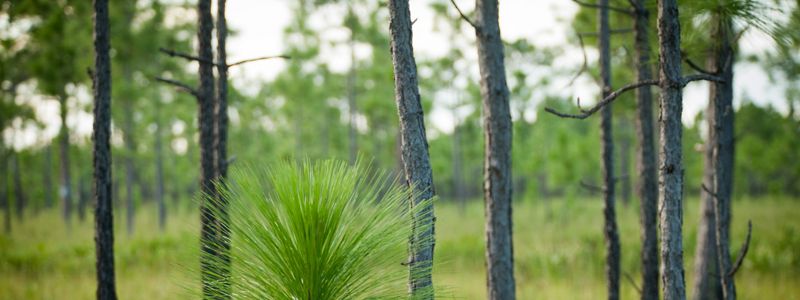
Rafter T: Ranching for Nature
This 5,100 acre working cattle ranch located along the eastern edge of the Lake Wales Ridge in Sebring was protected from development with a conservation easement. The ranch is part of the Everglades watershed, containing some of the oldest natural habitats and most biodiverse lands in the state, and is critical to water supply to the Everglades and aquifer. Home to imperiled and iconic plants and wildlife including the Florida panther, Florida black bear, bald eagle, swallow-tailed kite, Florida scrub-jay, southern fox squirrel and roseate spoonbill, Rafter T Ranch connects to large tracts of protected lands to form a contiguous natural corridor in Highlands County.
The protection of Rafter T Ranch advances the collective conservation effort designated by the Avon Park Air Force Range Sentinel Landscape in which the property is located, with government, private and non-profit partners working together to protect, manage, and restore nature at a landscape scale while also benefitting military readiness.
For nearly a decade, TNC has spearheaded a joint effort to safeguard the ranch from the pressure of potential development and preserve the ranch’s role as part of the connected corridor of essential lands that benefit wildlife and support water flow and storage. The property is bordered to the east by Arbuckle Creek, which flows southward to the 28,000 acre Lake Istokpoga. With conservation easements on the ranch now in place to protect nearly the entire property, ranching operations will continue while development is prohibited in perpetuity.
Lake Wimico: Biodiverse Northwest Florida Lands and Waters Protected
In the largest conservation win of its kind in over a decade, TNC successfully protected Lake Wimico in collaboration with partners. This crucial and biodiverse 20,161-acre piece of land in northwest Florida surrounds the 4,000-acre lake after which the parcel is named. Upon completion of the purchase in 2020, TNC immediately donated the property to the State of Florida through the Florida Department of Environmental Protection, for ongoing conservation, management, and restoration.
The safeguarding of Lake Wimico helps preserve and protect the water quality of the highly productive Apalachicola River, Apalachicola Bay and Gulf of America. It creates a protected refuge for resident and migratory wildlife, including many federally and state listed imperiled species. The lake and its surrounding lands and waters are home to the Florida black bear, manatee, bald eagle, osprey, swallow-tailed kite, many species of wading and shore birds and turtles. Its water flow into Apalachicola Bay is critical to nurseries of migrating fish and oyster populations. Additionally, the conservation of the cypress-dominated swamps, marshes and water flow help ensure a resilient landscape that provides adaptation to impacts of climate change and sea level rise, and habitat for ecological communities.
This freshwater wetland habitat in Florida’s panhandle has been identified repeatedly over the past fifty years as an area of critical conservation significance for preservation, and is a priority parcel with the state’s Florida Forever Program. With this acquisition, the land has now been protected in perpetuity. With the Lake Wimico property, TNC and its partners have expanded an existing tapestry of connected lands to over 1 million acres in total, resulting in one of the most diverse and important natural protected areas along the Gulf Coast.
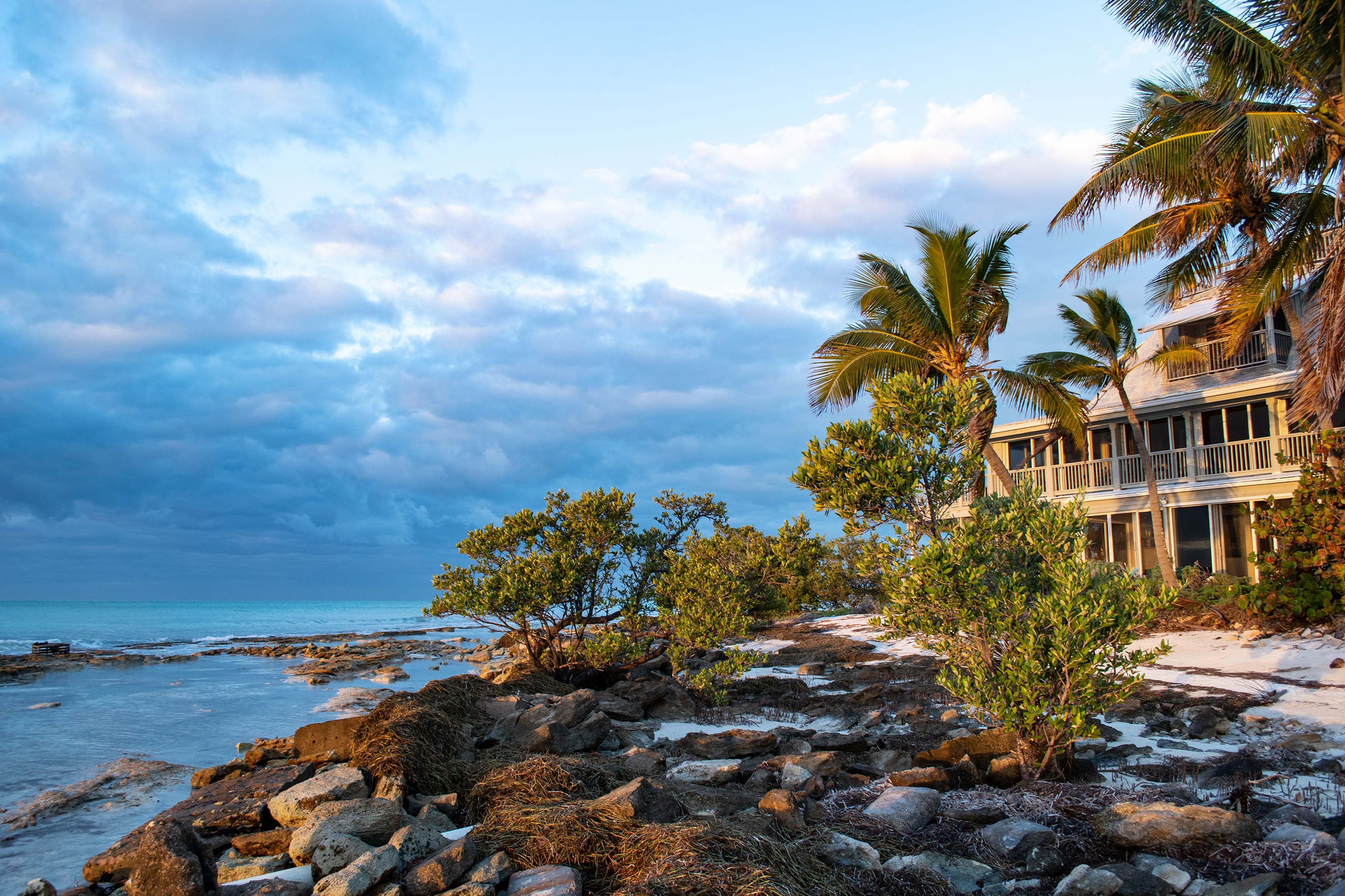
David Wolkowsky’s Ballast Key: Key to the Refuge
This 14-acre island joined the Key West National Wildlife Refuge in 2020 after owner David Wolkowsky generously donated it to TNC to be forever protected. Located in the clear blue and vibrant waters eight miles west of Key West, this safeguarded subtropical gem supports marine and coastal scientific research and education.
For more than two decades, TNC and the U.S. Fish and Wildlife Service worked closely with Mr. Wolkowsky to preserve the island’s natural and historical values. The partners are now collaborating to manage and conserve the island which is home to many imperiled and endangered species of native plants and wildlife. The shallow waters surrounding the key teem with inhabitants of a healthy coral reef ecosystem including threatened and endangered sea turtles.
Mr. Wolkowsky began his stewardship of the island in the early 1970s, carefully developing and managing the property in an environmentally sensitive way. As a well-known and impactful public figure, developer, philanthropist and visionary, he welcomed many guests to the island including Tennessee Williams, Truman Capote, Nancy Sinatra and Leonard Bernstein, among others. Mr. Wolkowsky arranged to donate the island to protect it from a future of development and offer its wealth of natural resources and beauty to conservation purposes, prior to his passing at the age of 99 in September 2018.
The island is the final piece of the Key West National Wildlife Refuge, established in 1908 by President Theodore Roosevelt as a preserve and breeding ground for nesting wading birds and other wildlife, set in over 375 square miles of open water. For more than 110 years the refuge has been managed to preserve quality, character and integrity of these protected wilderness lands and open waters.
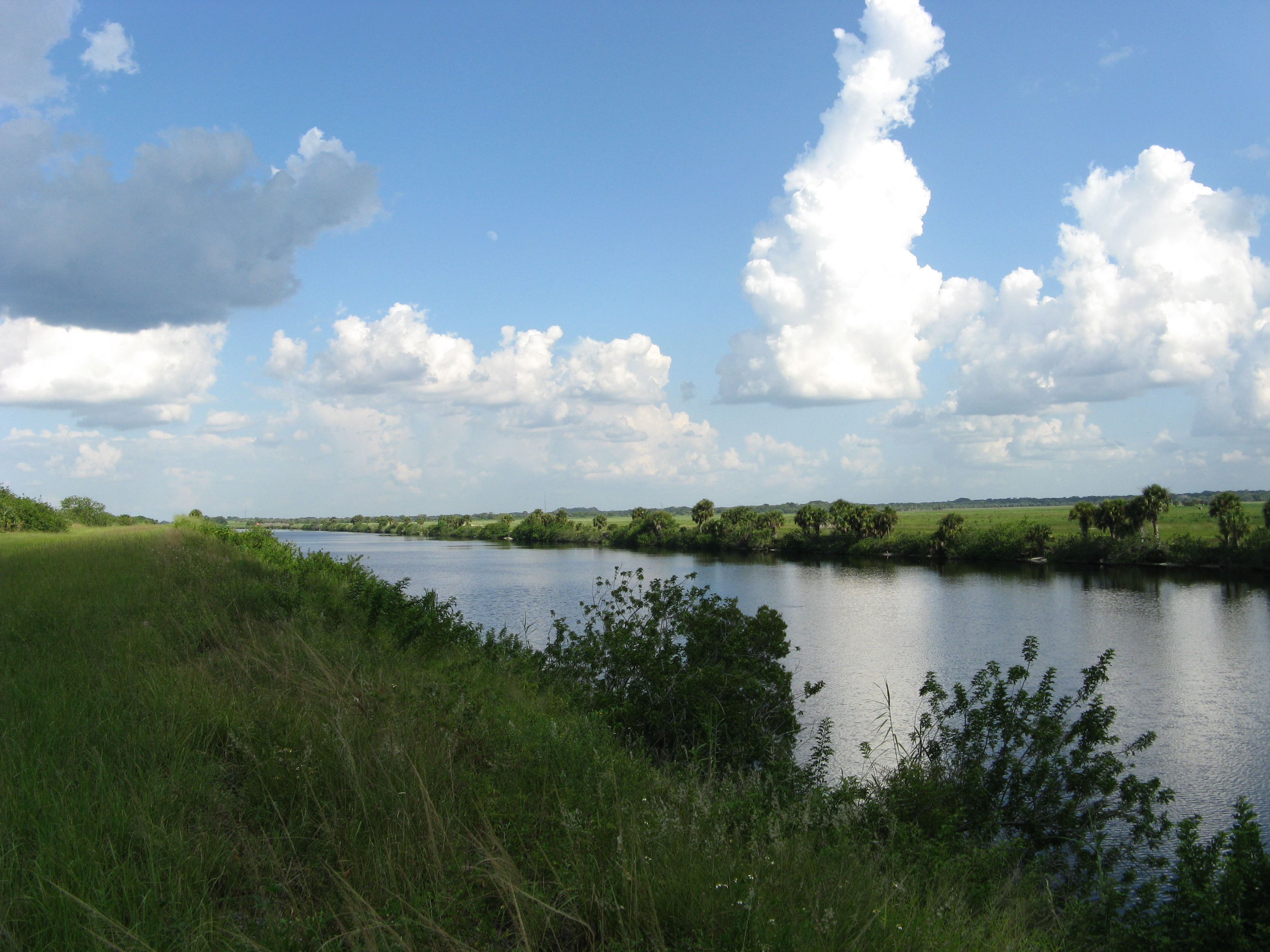
Cypress Creek Grove: First for Panther Protection
The 460-acre Cypress Creek Grove property in Glades County protects land along the northern bank of the Caloosahatchee River that is essential to the future expansion of the federally endangered Florida panther population. Protected in 2017, it was the first tract within the identified panther corridor on the northern bank of the river, the first working citrus operation in Florida to commit to panther protection, and the first conservation easement located in the panther corridor funded exclusively by member donations.
The property is located within an area that facilitates panther expansion from habitat in southwest Florida into lands in central Florida and beyond. Protection of this corridor is critical to the long-term survivability and recovery of the Florida panther. Panthers require vast territories to support healthy breeding populations, and suitable lands in Hendry and Glades County link southwest Florida with lands north of the Caloosahatchee River.
For the panther, expanded habitat is only a short swim away, and now there are protected properties on both banks of the river. The citrus grove dates back to the late 1980’s to early 1990’s when the land was planted with citrus and began operating commercially. Currently, about 273 acres of Valencia and Hamlin oranges are in active production. The property also features freshwater and forested wetlands, and a creek that provides habitat for many species of wildlife including wading birds, reptiles and amphibians.
Help Us Make a Difference for People and Nature in Florida
For more than 60 years, we have been working to conserve the lands and waters on which all life depends in Florida. We have helped protect more than 1.2 million acres of vulnerable lands and waters in Florida, and we own and manage more than 40,000 acres including four preserves that are open to the public. Your generosity can help ensure that projects like our land protection work will continue.
